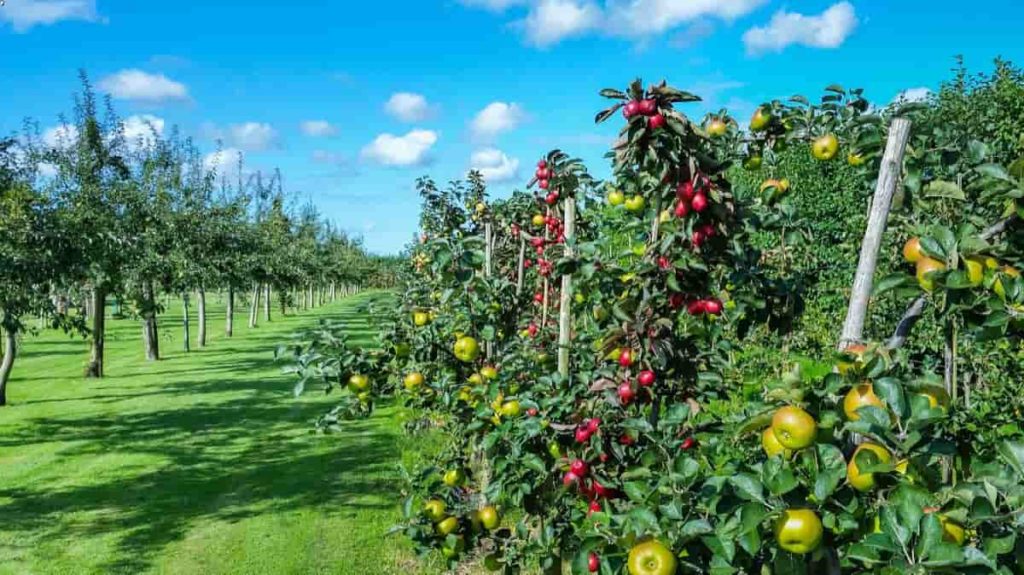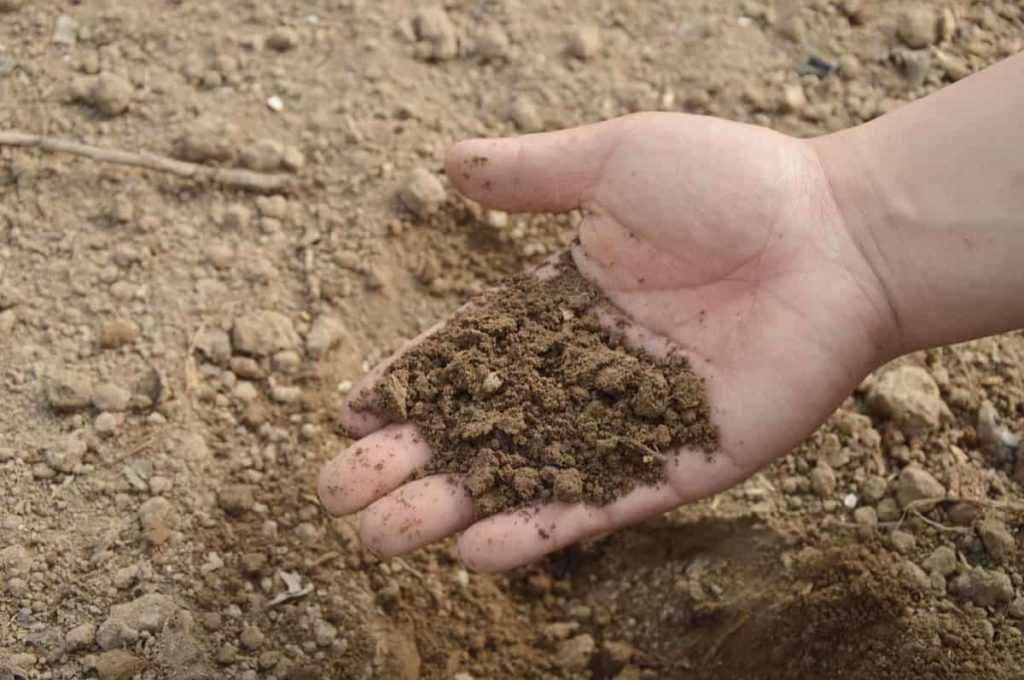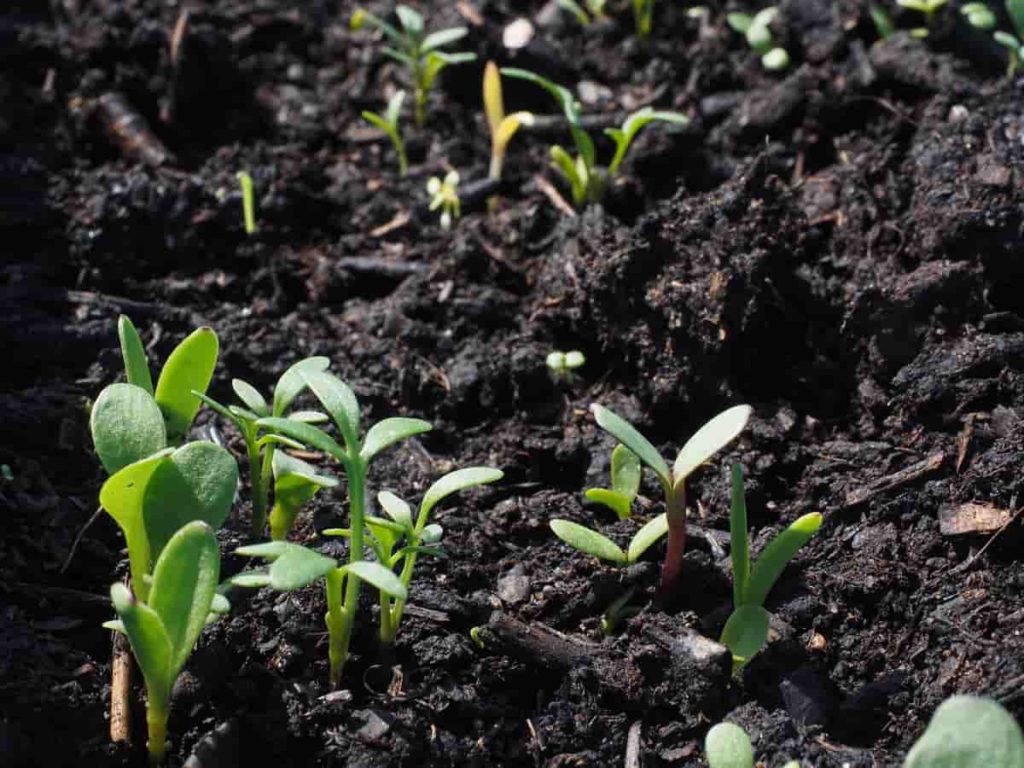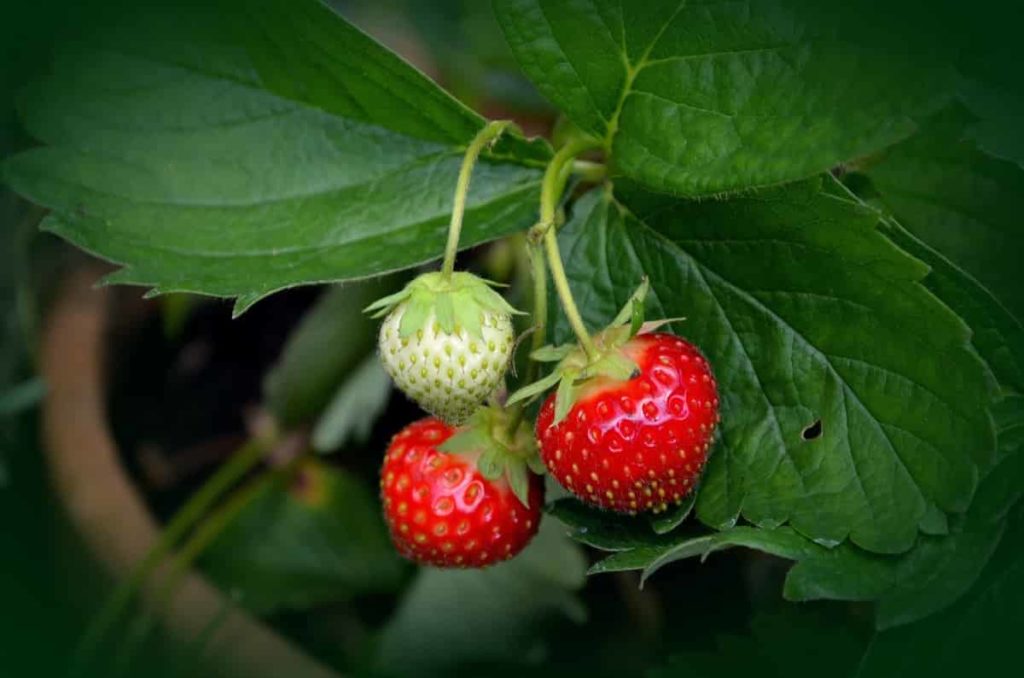Fresh fruit is an important element of our daily meals since it contains vitamins that make us strong and healthy while also preventing illness and disease. Nothing beats the taste of freshly harvested fruit. You can construct a flourishing fruit garden that will provide a rich fruit yield that you will be proud of with a little effort, planning, and upkeep. Let’s check out how to start a fruit garden from scratch.

They also contain more nutrients, making them healthier and less expensive than store-bought fruits. Almost any gardener would tell you that being proud of a little garden is preferable to be annoyed by a large one. When the desire to start your garden hits, it may be tempting to turn your entire backyard into a little fruit farm, but for first-time gardeners, this may be a lot of effort. Instead, start with a little plot of land and one sort of fruit. Once you’ve mastered that, extend your horizons and begin cultivating different types of fruit.
How to Start a Fruit Garden from Scratch
Choosing the type of garden
Backyard gardening
An in-ground garden frequently gives you a lot of flexibility in terms of what you may grow, while also making use of the natural ecosystem of nutrients, bacteria, and insects that are already there to aid your plants’ growth. Choose a location that gets at least six hours of direct sunshine each day and faces south.
Raised bed gardening
Gardeners who feel pain from leaning over too much or who have restricted mobility may appreciate the benefits of this garden, which include improved soil control, more controllable weed control, and simpler access. Raised beds can be made out of bricks, wood, or rocks. A raised bed is six inches from the ground to the height of a conventional table, and it’s usually three or four feet broad with at least 16 inches of depth.
In case you miss this: Top 25 Vegetables to Grow on Raised Beds

Container gardening
Container gardening is a good option for individuals who can’t grow a typical in-ground garden due to bad soil or no ground at all (like in apartments). Containers come in a variety of sizes and shapes and may be found at nurseries. To fit your gardening needs, containers come in a variety of shapes, sizes, and materials. Almost anything may be used as a gardening container, aside from terra cotta and clay pots.
Make it certain that the container has enough drainage and is deep enough to support your plants’ roots. A container garden is great for employing aerated, nutrient-rich, and weed-free store-bought organic potting soil. Plants with comparable moisture and light requirements should be placed in the same container. Not all plants are ideal for container gardening, and not all containers are compatible with all plants.
Choosing the spot
Sunlight
To have the best chance of producing a fruit garden, choose a location on your lawn that receives at least six hours of sunshine. If you have shadier areas in your yard that only get partial sun, plant plums, kiwis, and pears to make use of the space. Fruit needs a lot of sunlight to thrive and become robust. A lot of shadows won’t harm your plants, but it makes them less productive.
Soil composition
Dense soil, such as clay, is frequently too thick for roots to develop and does not drain efficiently. Stones and other impediments have been removed. Also, the soil shouldn’t be too sandy. Compost or old manure are both good sources of organic matter. Plants get their nourishment from organic materials. When a garden is abundant in these components, the earth will offer nutrients for the plants to develop, eliminating the need for chemical fertilizers.
Adding enough organic matter to your soil can strengthen its structure and provide nutrients to your plants. The majority of vegetable growers consider adding compost or leaf mould to their soil. These are standard soil improvers that you may buy at garden centers, but you should start generating your compost first. It’s simple to do and ensures that your plants have a steady supply of extra nutrients.
In case you miss this: How To Prepare Soil For Planting In Pots

Most veggies may be planted a couple of weeks after adding compost or leaf mould to the top few inches of soil. Alternatively, spread some all-purpose compost on the ground and rake it in. You may also use organic matter as a mulch around existing plants by spreading it on the soil’s surface. This permits nutrients to be absorbed into the soil while also retaining moisture and preventing weed growth.
Preparation
Till the soil to make it lose and crumbly in preparation for planting. This will help get rid of any weeds that have sprouted. Break up any clods with a rake. Remove any rocks that you find in the area. Smooth off the top of the soil to make it fairly level.
It is vital to clear the sod before planting fruits for them to grow. Dig beneath the grass and roots using a shovel, then pull off the grass layer. Spread cardboard sheets over the surface for a less time-consuming solution. A layer of compost should be spread over the cardboard. Cover the dirt with at least 2 or 3 inches of earth and leave it for four months.
Reduce the following items:
- Anything that isn’t appropriate for your soil type
- If you have a little property, anything that requires a lot of areas is out.
- Anything too delicate to grow in your area anything that you can acquire for a low price — there’s no use in wasting important space growing basics.
Choosing the fruits
While the majority of what you produce will be based on your diet, you should start with fruits that are easy to manage. Strawberries may be grown in containers or the ground, making them ideal for houses. Strawberries are also a high-yielding plant that requires minimal space to thrive. You’ll need to offer some support because watermelons aren’t a “self-clinging” plant. Watermelons do a terrific job of self-sufficiency.
In case you miss this: Lemon Gardening For Beginners, How To Start, FAQs

Don’t limit yourself to only fruit that grows on trees. Apple, lemon, and mango trees are easy to plant and make a beautiful addition to any home or yard. Your garden produces a high amount of produce, not to mention being better in nutritious content, freshness, and taste, for the purchase of a packet of seeds. Fresh fruits and vegetables, especially organic ones, are expensive to purchase, but growing them in your garden may save you a lot of money in just one season.
Sowing seeds
Peg a length of thread between two wooden posts to create a straight line across the dirt. Make a ridge in the dirt with the end of a shovel to a few inches deep. Fill the drill with water to moisten the soil. Sow seeds according to the directions on the packaging. Push the soil back into the drill with the shovel and gently press down the surface. Before removing the string, mark one end of the row.
As tender plants might be injured by cold, they are started indoors and then transplanted to the garden once they have established themselves. Before planting them in the garden, follow the directions on the seed packaging and wait till the supporting climate.
In case you miss this: Garden Vegetable Seeds for Rainy Season

Plug plants
Many gardeners choose to avoid the effort of germinating seeds and instead purchase plug plants. These are young plants that may be planted right away in the garden. They are more expensive to buy than seeds, but they take care of the difficult portion for you. Also, keep in mind that plug plants come in fewer kinds than seeds.
Tips for better results in fruit gardening
- Choose a sunny and open area.
- Plant fruits and vegetables that you love to eat.
- To enhance the structure of the soil, always remove weeds.
- Check your soil type and, if necessary, utilise containers or raised beds.
- Never seed too soon after the earth has warmed up.
- Dig compost into the soil to improve it. Compost your waste, if possible.
- For a quick harvest, plant fast-growing types in pots.
- During dry times, make sure everything is well-watered.
Frequently asked questions
What are the easiest fruits to grow?
The following fruits are the simplest to cultivate indoors: Tomatoes, strawberries, oranges, lemons, avocados, raspberries, blackberries, and figs.
What are the fruits that can be grown in pots?
Blackberries, strawberries, and raspberries are some of the fruits that grow fast.
In case you miss this: Growing Strawberries In Greenhouse – Polyhouse

What is the best time to start your garden?
The Spring season of the year is considered the best time to start your garden.
Can you plant different fruit trees next to each other?
Fruits of all kinds get along pretty smoothly. When selecting fruit trees for the backyard orchard, consider spacing for excellent canopy development, ease of picking, adequate air circulation, and size compatibility. Fruit trees are typically planted in circular forms by urban gardeners who wish to make the most of limited space rather than in traditional row arrangements.
Disclaimer: The above analysis is only assumed (not proved) to provide great results when practiced. We are not responsible for any errors that arise on this website or from any decision or action taken as a result of using this site.
- How to Grow Hibiscus from Flower
- Plantation Ideas for Home Decoration: A Beginners Guide
- Flower Garden Designs and Layouts for Beginners
- Planting and Spacing Techniques in Papaya: A Beginner’s Guide
- Growing Gold: Essential Techniques for Planting Pineapples
- How to Make Kalanchoe Plant Bushy: Home Remedies and Solutions
- 11 Reasons Why Your Gardenia is Not Blooming: Home Remedies and Solutions
- Eco Elegance: The Guide to Designing a Drought-Tolerant Landscape
- Gardening on a Slope: Strategies for Hillside Landscaping
- Nourish and Flourish: Top Organic Mulches for Thriving House Plants
- Everything You Want to Know about Indian Mogra Flower: Discover Uses and Growing
- Green Thumb Success: Expert Tips for Cultivating Greenhouse Pumpkins All Year Round
- Maximize Growth & Flavor: The Ultimate Guide to Companion Planting in Herb Gardens
- How to Control Rhododendron Problems Naturally: Home Remedies and Organic Ways to Fix Them
- Natural Magic: The Remarkable Benefits of Cinnamon for Plants
- Best Steps to Revive Dying Tulip with Natural and Organic Treatment
- 10 Reasons Why Your Angel Trumpet is Not Blooming: Remedies and Treatment
- How to Fix Periwinkle Leaf and Flower-Related Problems: Natural Remedies and Solutions
- How to Fix Zinnias Leaf and Flower Problems: Discover Natural and Home Remedies
- Organic Steps to Induce Lemon Tree Flowers: A Comprehensive Guide
- Bloom Booster: Crafting the Perfect Homemade Bougainvillea Fertilizer
- Optimizing Growth: A Guide to Applying NPK Fertilizer for Potted Plants
- 10 Best Homemade Fertilizers for Rubber Plant: DIY Recipes and Application Method
- How to Boost Female Pumpkin Flowers: Effective Steps for More Flowers and High Yields
- Transform Your Indoor Garden: Top Benefits of Pink Salt for Houseplants
- 10 Best Homemade Fertilizers for Peacock Plants (Calathea): Easy DIY Guide
- Unlock Blooms: 9 Reasons Why Your Potted Chrysanthemum is Not Blooming
- 8 Reasons Why Your Potted Hibiscus is Not Blooming: Fix it with Simple Solutions
- Unlock Blooms: 9 Key Reasons Your Potted Frangipani Won’t Flower
- 10 Reasons Why Is My Ice Plant Not Blooming: Remedies and Treatment
- 10 Reasons Why My Potted Hydrangea Not Blooming: Treatment and Remedies
- 10 Reasons Why is My Wisteria Not Blooming: Remedies and Treatment
- 10 Reasons Why is My Goldfish Plant Not Blooming: Remedies and Treatment
- Maximize Your Space: Ultimate Guide to Balcony Gardening with Grow Bags
- 10 Reasons Why Your Iris is Not Blooming: Remedies and Treatment
- 10 Reasons Why Your Anthurium Plant is Not Blooming: Treatment and Remedies